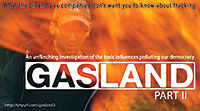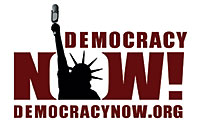In every issue of our magazine, our editors and contributors hand-pick a variety of books, films, websites, and other media for all ages.
Here are seven resources we recommended in our fall issue.
 The Speech: The Story Behind Dr. Martin Luther King, Jr.’s Dream,
The Speech: The Story Behind Dr. Martin Luther King, Jr.’s Dream,
by Gary Younge
171 pp., $19.95
You may know Gary Younge from his fine columns on race and politics in The Nation magazine. Here Younge offers the riveting story behind one of the most famous speeches in U.S. history, Martin Luther King Jr.’s “I Have a Dream” address at the August 1963 March on Washington for Jobs and Freedom. The book includes a chapter on “the moment”—an especially valuable look at both the national and international context of 1963; background on the march; an analysis of the speech itself; and commentary on the legacy of the march and speech. As Younge wrote recently: “Relatively few people know or recall that the Kennedy administration tried to get organizers to call [the March on Washington] off; that the FBI tried to dissuade people from coming; that racist senators tried to discredit the leaders; that twice as many Americans had an unfavorable view of the march as a favorable one.” This is important background for teachers, but also readable by many high school students.
 Stay Solid! A Radical Handbook for Youth,
Stay Solid! A Radical Handbook for Youth,
edited by Matt Hern and the Purple Thistle Centre
319 pp., $20
There may be school libraries that would deem this book too risqué or soft on drugs. But Stay Solid! A Radical Handbook for Youth is a remarkable assembly of testimonies, stories, advice, poetry, cartoons, lessons, short essays, and “other stuff to check out” from more than 100 radical activists divided into diverse subjects, including family, race, gender, school, friends, sex, disability, indigenous struggles, ecocide, and “your physical body.” Sprinkled throughout are rich, evocative quotes. This is not a G-rated book. The text does not adhere to a “Say no to drugs” admonition, and it is joyfully sex-friendly. As one young Teaching for Change intern wrote in recommending this book, “These views are incredibly important in supporting youth to be agents of their own decisions and, at the same time, are radically different from mainstream views.”
 Educating Activist Allies: Social Justice Pedagogy with the Suburban and Urban Elite,
Educating Activist Allies: Social Justice Pedagogy with the Suburban and Urban Elite,
by Katy M. Swalwell
161 pp., $41.95
Katy Swalwell opens this unique book with a quote from the late Brazilian educator, Paulo Freire: “In the egoistic pursuit of having as a possessing class, [the oppressors] suffocate in their own possessions and no longer are; they merely have.” For Swalwell, a Rethinking Schools contributor, critical teaching for social justice benefits everyone—even the very privileged. As such, this work contributes to building a more just society for us all. In this accessible, story-rich volume, Swalwell offers example after example of how educators in different elite contexts attempt to teach for social justice—described in many instances through her own careful observations of their teaching. Interviews with students offer a window into how this teaching was received. This is a valuable book for any educator trying to clarify what it means to teach for social justice, but especially for those who find themselves teaching the children of the wealthy.
 Gasland II, directed by Josh Fox
Gasland II, directed by Josh Fox
125 min.
High-volume horizontal hydraulic fracturing for oil and gas—more commonly known as “fracking”—is one of the scariest technologies on the planet. A recent open letter from Pennsylvania residents described the effects of fracking: “In short, water contamination has been widespread; our air has been polluted; countless individuals and families have been sickened; farms have been devastated, cattle have died, and our pristine streams and rivers have turned up dead fish . . . and our communities have been transformed into toxic industrial zones with 24/7 noise, flares, thousands of trucks, and increased crime.” Josh Fox’s new film Gasland II illuminates this grim reality. With a blend of storytelling, outrage, science, and, yes, humor, Fox offers a student-friendly look at this technology from hell. The first Gasland film—which featured the now infamous images of residents lighting their kitchen tap water on fire—was nominated for an Academy Award. As Julie Treick O’Neill writes in her Summer 2012 Rethinking Schools article on teaching this earlier film, “Fox was a hit with my students: He was real enough, cool enough, and smart enough to take on fracking.” Gasland II is an important resource to help our students navigate the world’s disturbing new fossil fuel terrain. For middle school and high schools classrooms.
 As Fast As Words Could Fly, by Pamela M. Tuck,
As Fast As Words Could Fly, by Pamela M. Tuck,
Illustrated by Eric Velasquez
32 pp., $18.95
Based on her father’s experience in 1960s North Carolina, Pamela Tuck tells how a family and community challenge racism where they work, shop, and go to school. The protagonist, 14-year-old Mason, is the letter writer for the local African American civil rights committee. In appreciation, they give him a typewriter. His typing skills help him open doors when he attends the formerly all-white high school. There is no sugarcoating of the racism Mason faces. In fact, when he wins a county typing competition, not one audience member applauds. Instead, Mason finds love, admiration, and strength from his family and community. This picture book could be used to introduce the history beyond the big demonstrations about the fight for civil rights. It would lend itself well to a group read and discussion, and could also be a wonderful source of prompts for writing from the perspective of different characters. For grade 3 and above.
Democracy Now! Hosts Amy Goodman and Juan Gonzalez
(free podcasts)
We previously included Democracy Now! in the Rethinking Schools resources section. But, as we begin a new school year, we thought that it was worth reminding people that, in our judgment, this is the best Monday-through-Friday news broadcast in the United States. The news headlines that open each hour are a rundown of vital stories often ignored or distorted in the mainstream media. Headlines are followed by several in-depth reports, many of which make ideal classroom viewing: striking fast-food workers, conflict in Egypt, NSA revelations, stop-and-frisk policing, the true history of the 1963 March on Washington, drone strikes, the Trayvon Martin tragedy, the climate crisis, and more. One recent episode that could and should be used in class is Cornel West’s critical commentary on President Obama’s talk on race relations following the acquittal of George Zimmerman. Each broadcast is available as simple audio or as audio/video. All are archived and available for free at the website.
 If I Ever Get Out of Here, by Eric Gansworth
If I Ever Get Out of Here, by Eric Gansworth
373 pp., $17.99
Eric Gansworth’s first young adult coming-of-age novel hits a home run. The main character, Lewis “Shoe” Blake, navigates relationships with family and friends on and off the upstate New York Tuscarora Reservation in the mid-1970s. Debbie Reese, editor of the website American Indians in Children’s Literature, alerted us to the novel. She explains that it offers “a rare but honest look at culture and how people with vastly different upbringings and identities can clash. And dance. And laugh. Gansworth informs readers about cultural difference, but he doesn’t beat anyone up as he does it.” Young adult author Cynthia Leitich Smith calls it “a heart-healing, mocs-on-the-ground story of music, family, and friendship.”
 This collection of resources from our fall 2013 magazine was reviewed by Rethinking Schools curriculum editor Bill Bigelow and Teaching for Change Executive Director Deborah Menkart. Bill and Deborah are also co-directors of the Zinn Education Project, a collaboration between the two organizations..
This collection of resources from our fall 2013 magazine was reviewed by Rethinking Schools curriculum editor Bill Bigelow and Teaching for Change Executive Director Deborah Menkart. Bill and Deborah are also co-directors of the Zinn Education Project, a collaboration between the two organizations..
Find more of our recommendations on Pinterest.
Subscribe to our magazine to receive recommendations like this and much more in your mailbox with every new issue.

